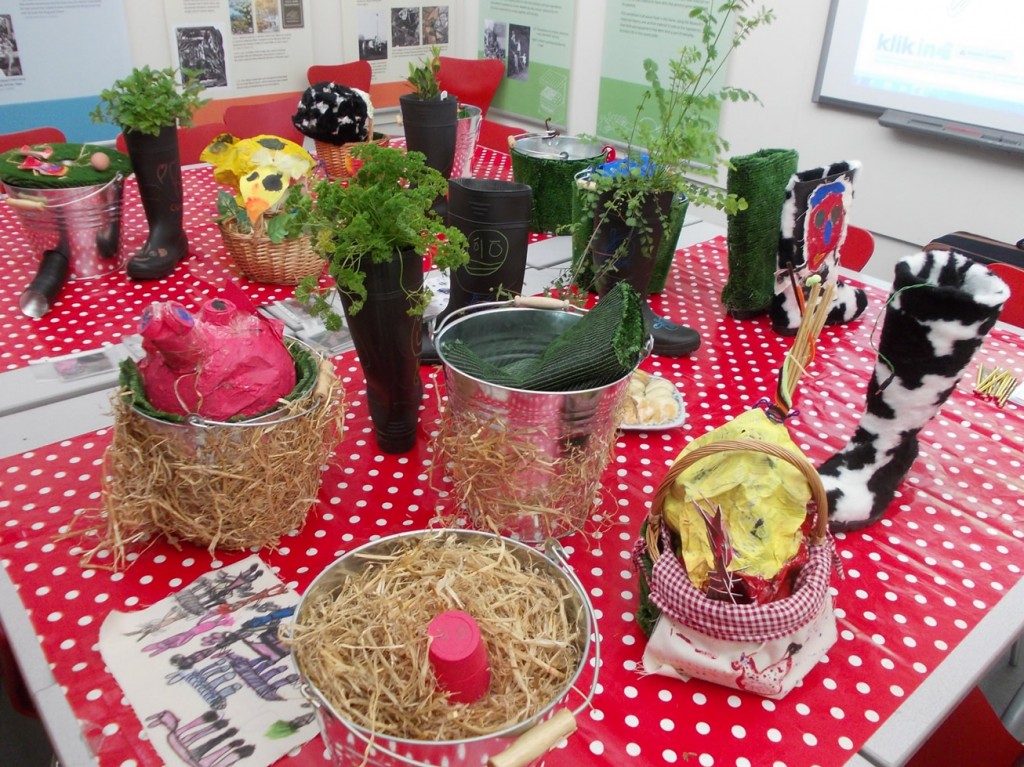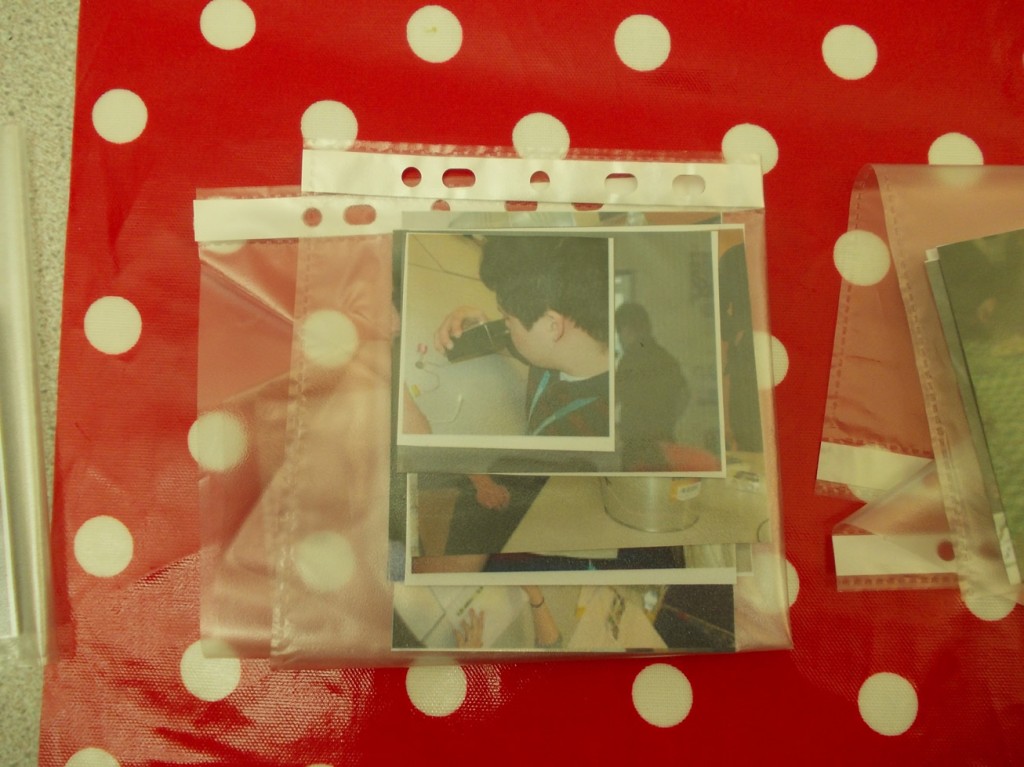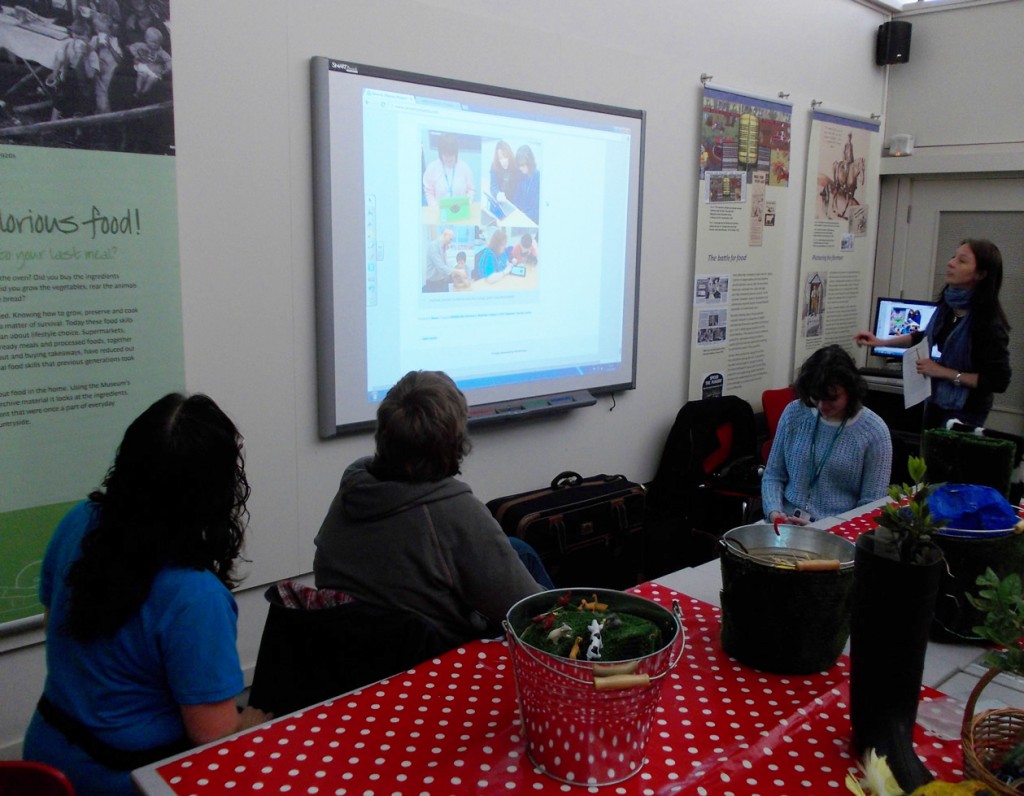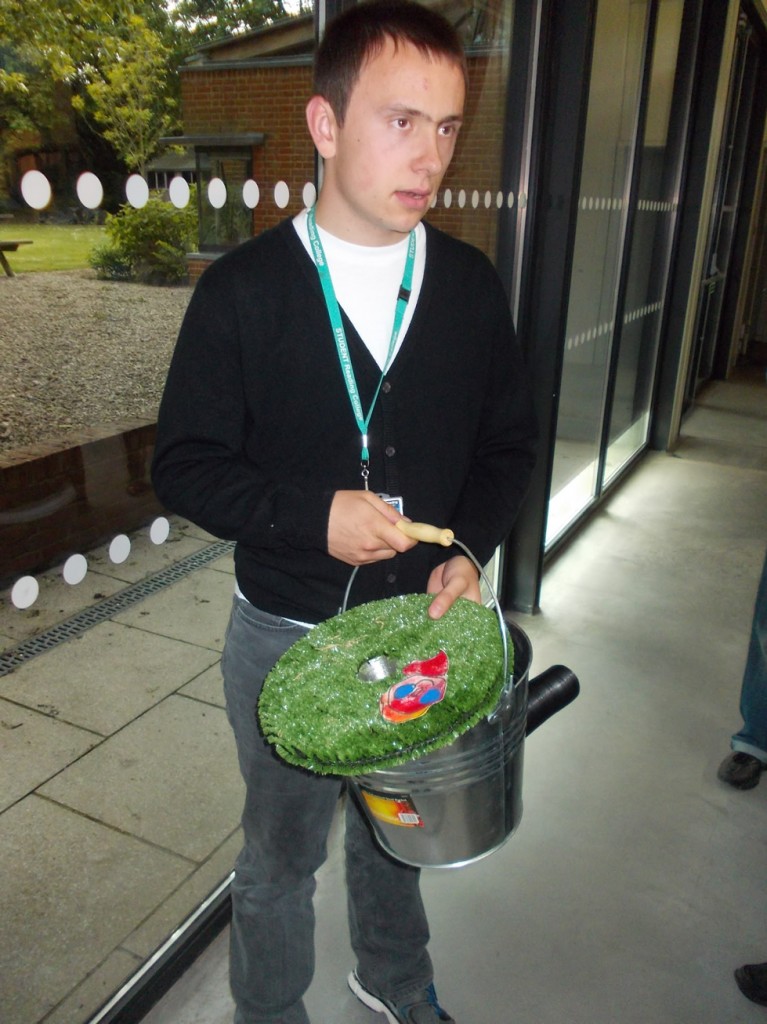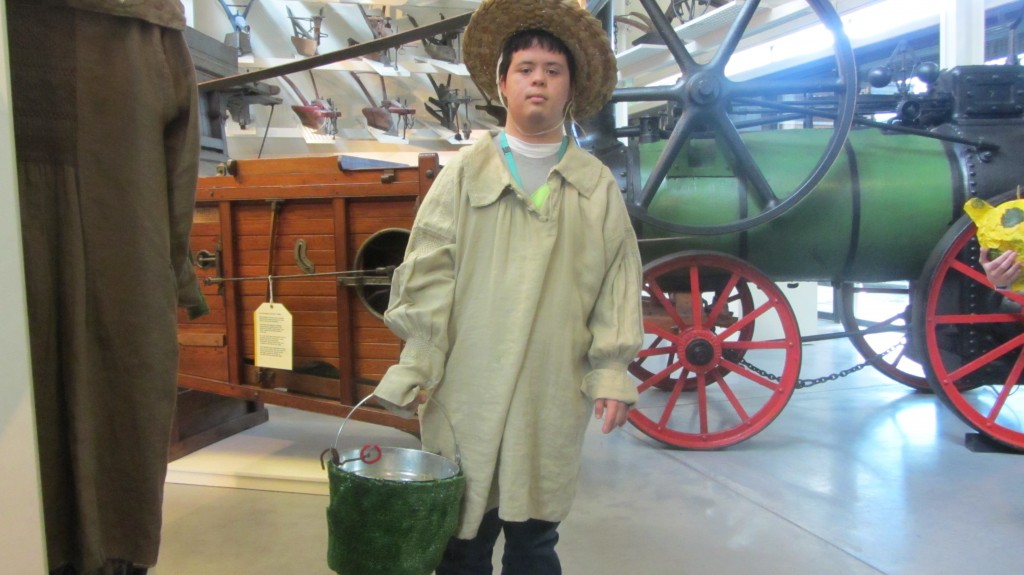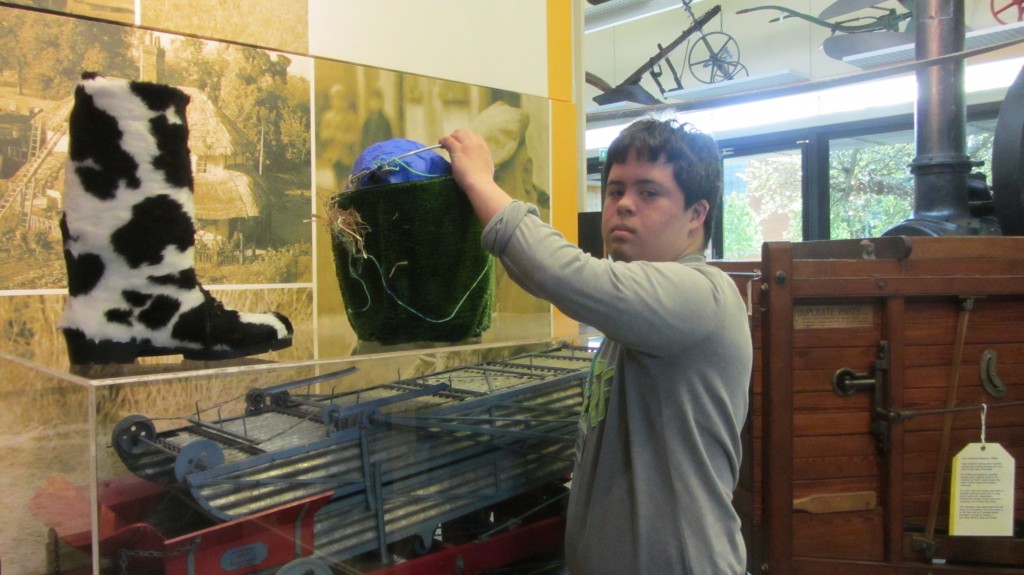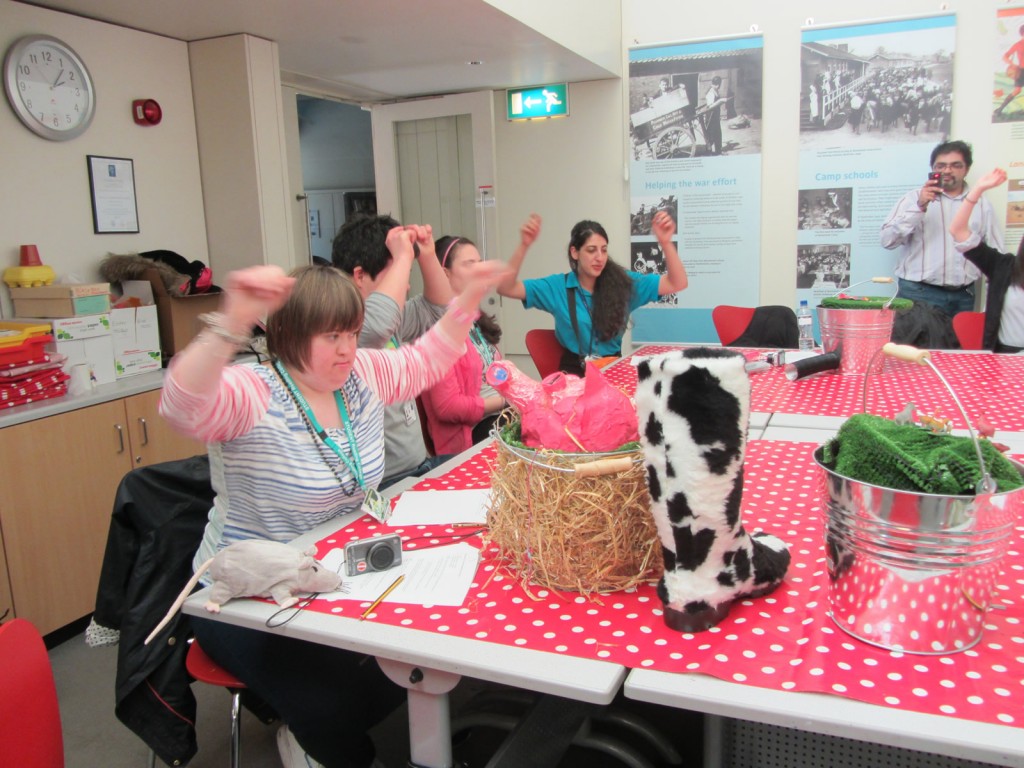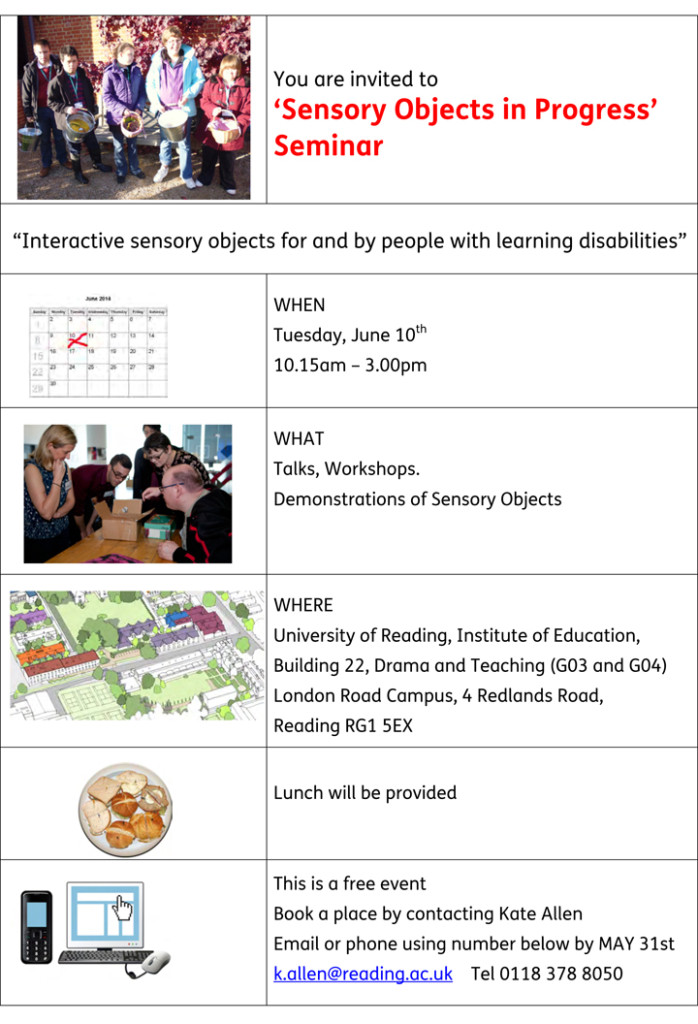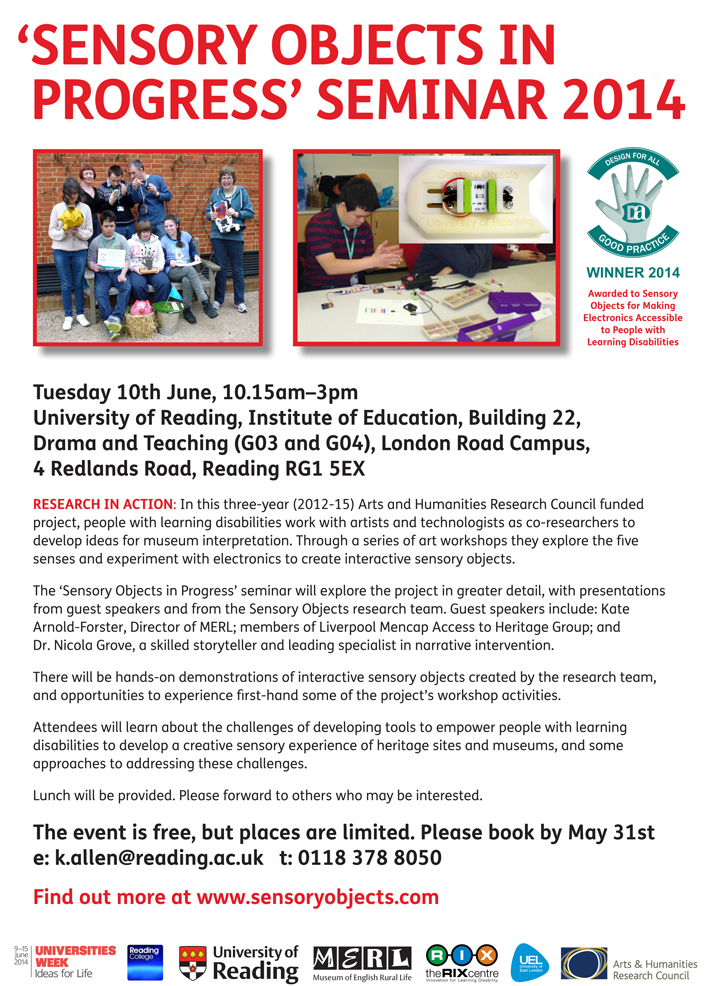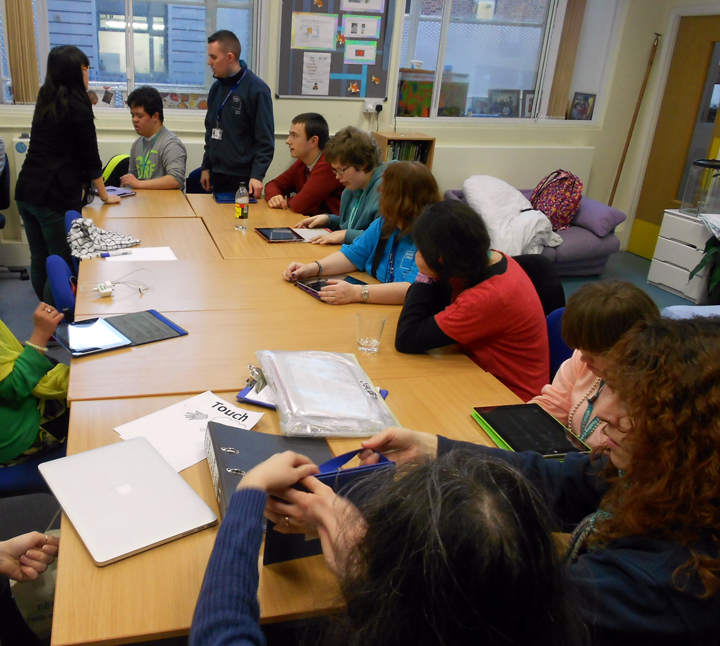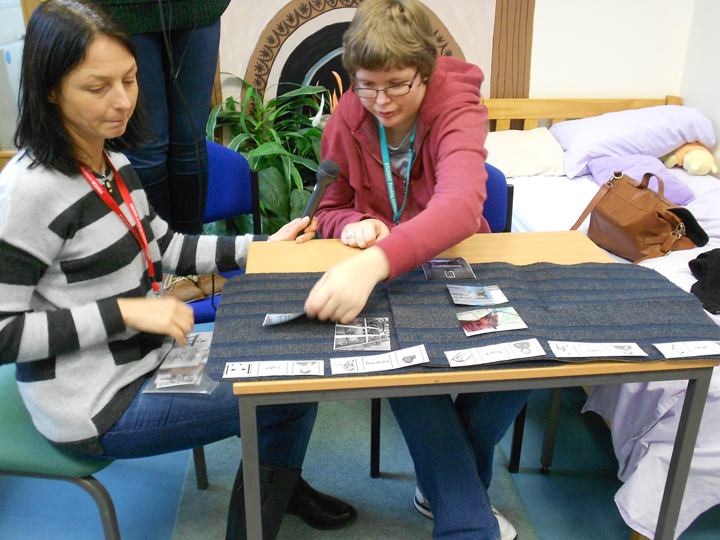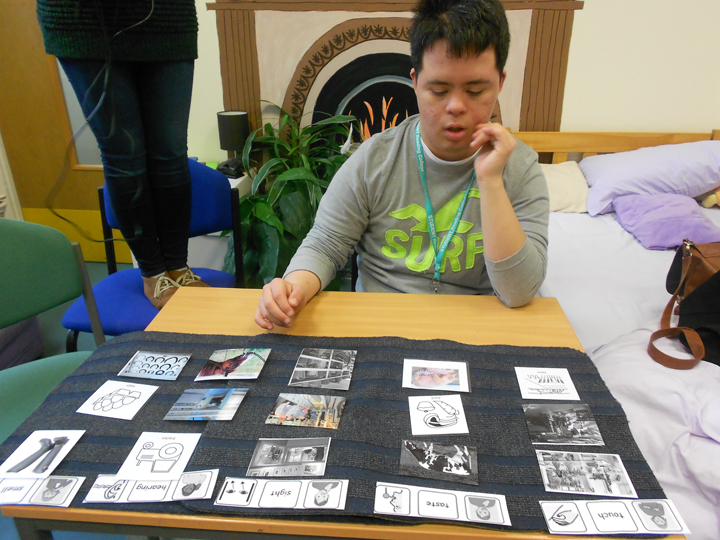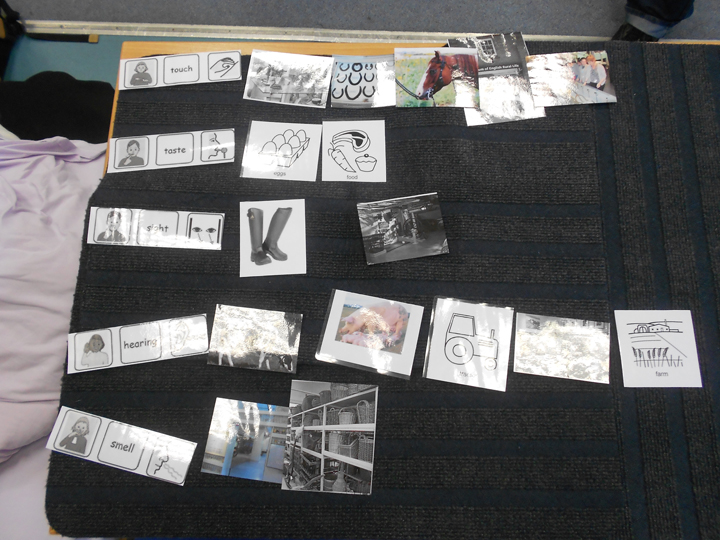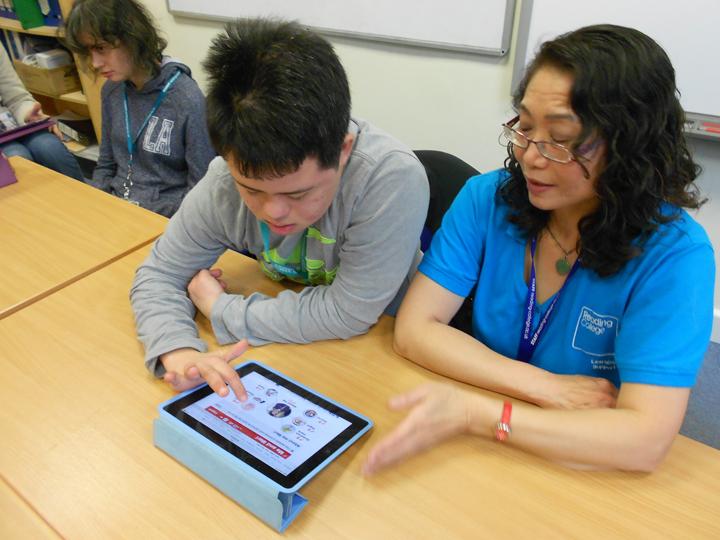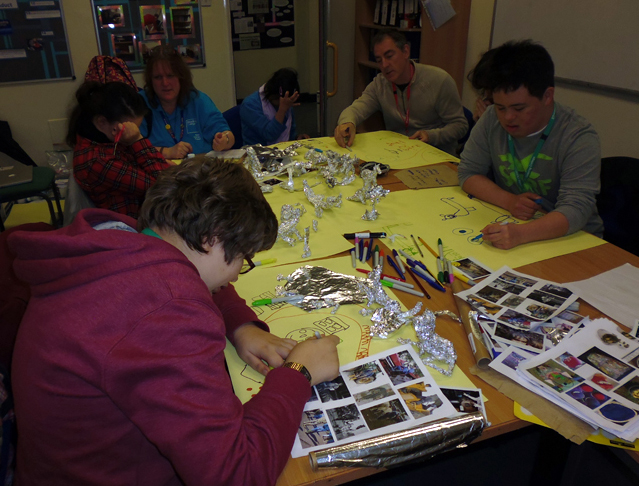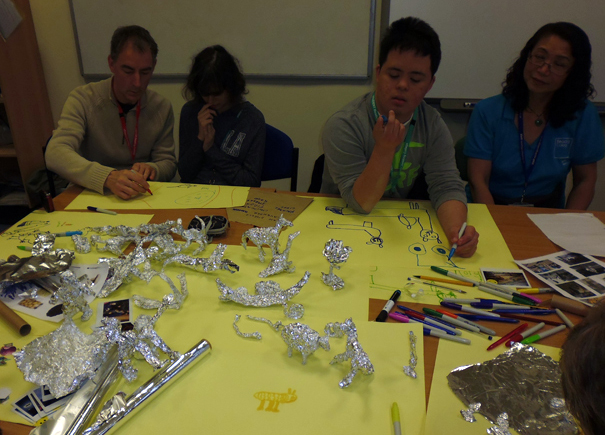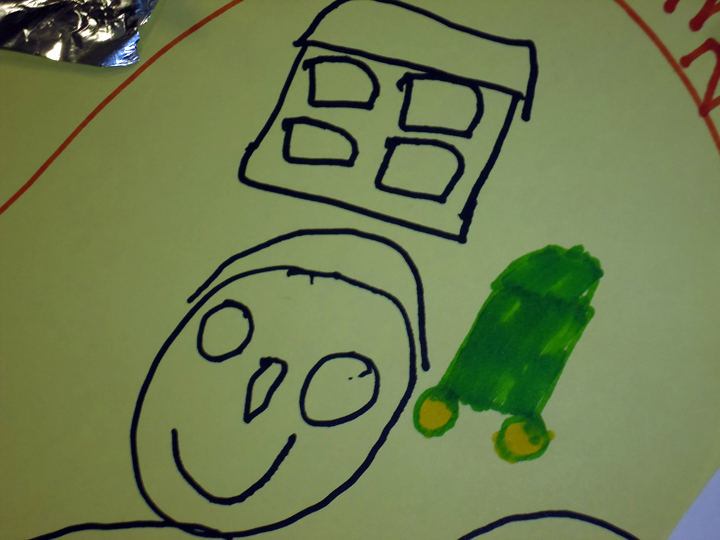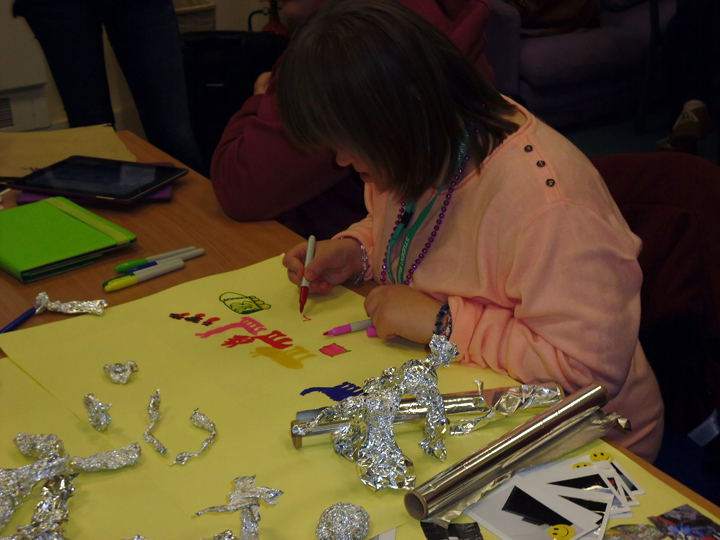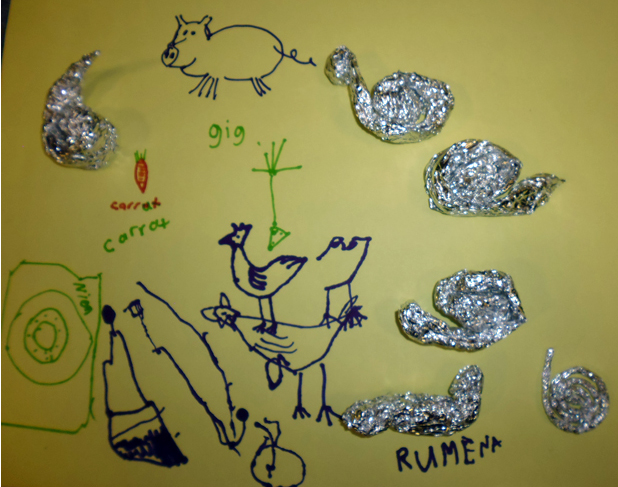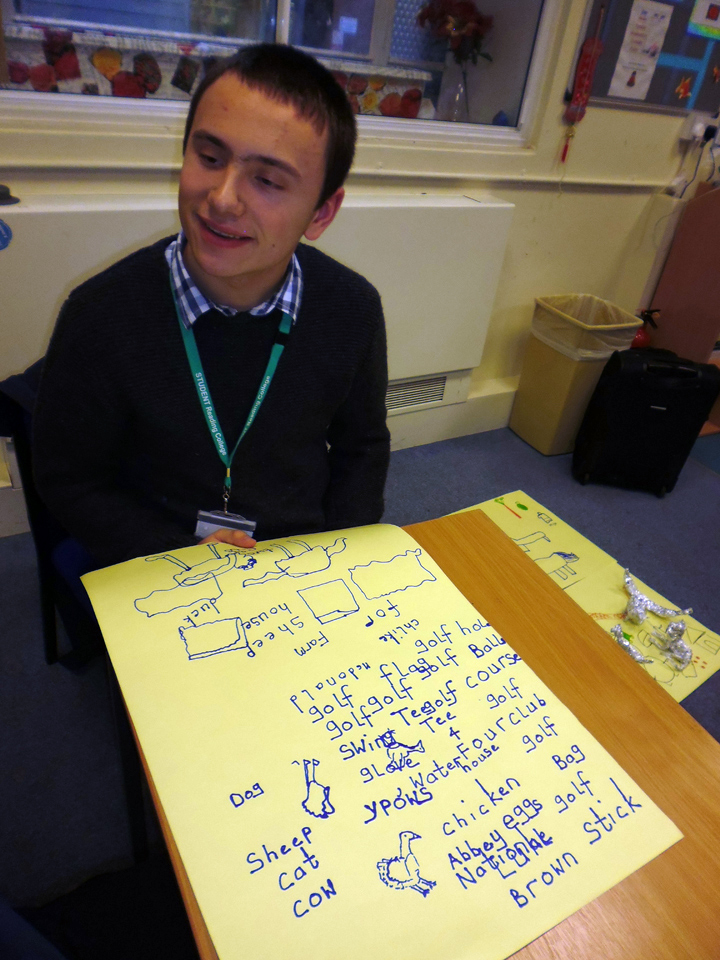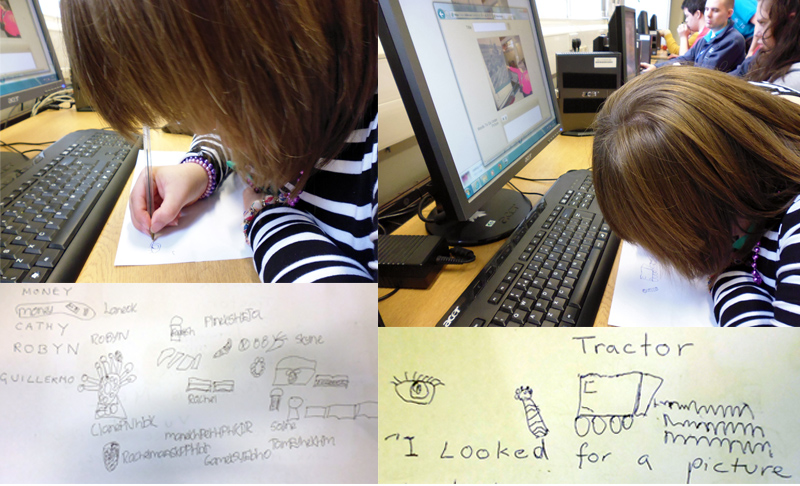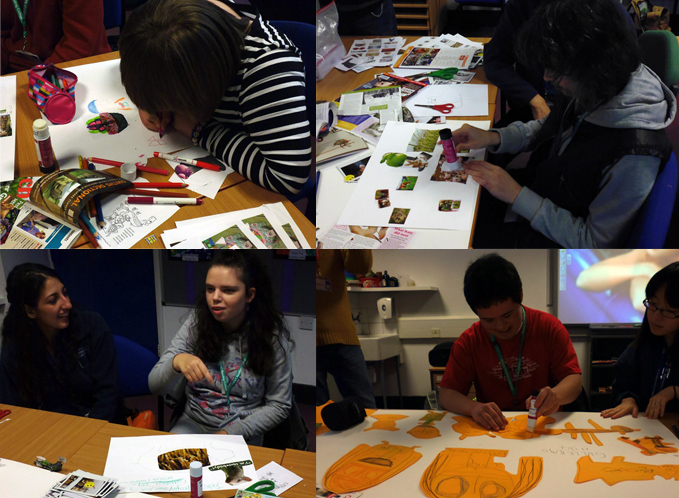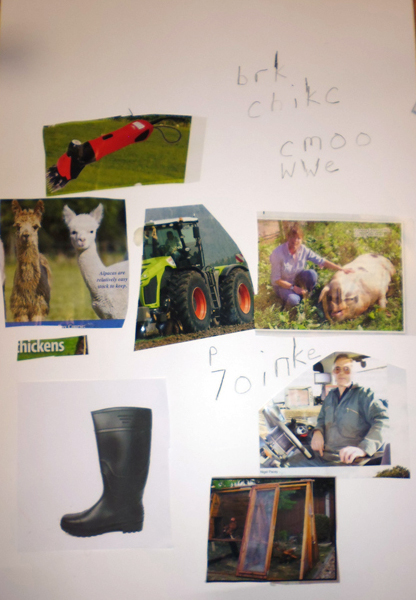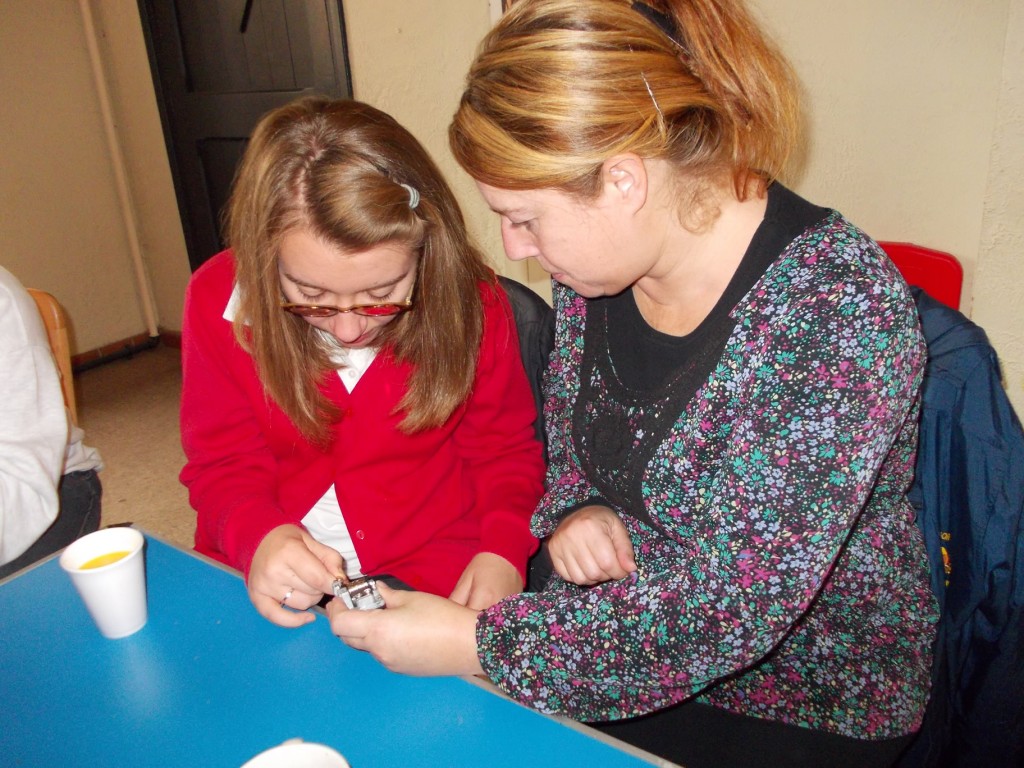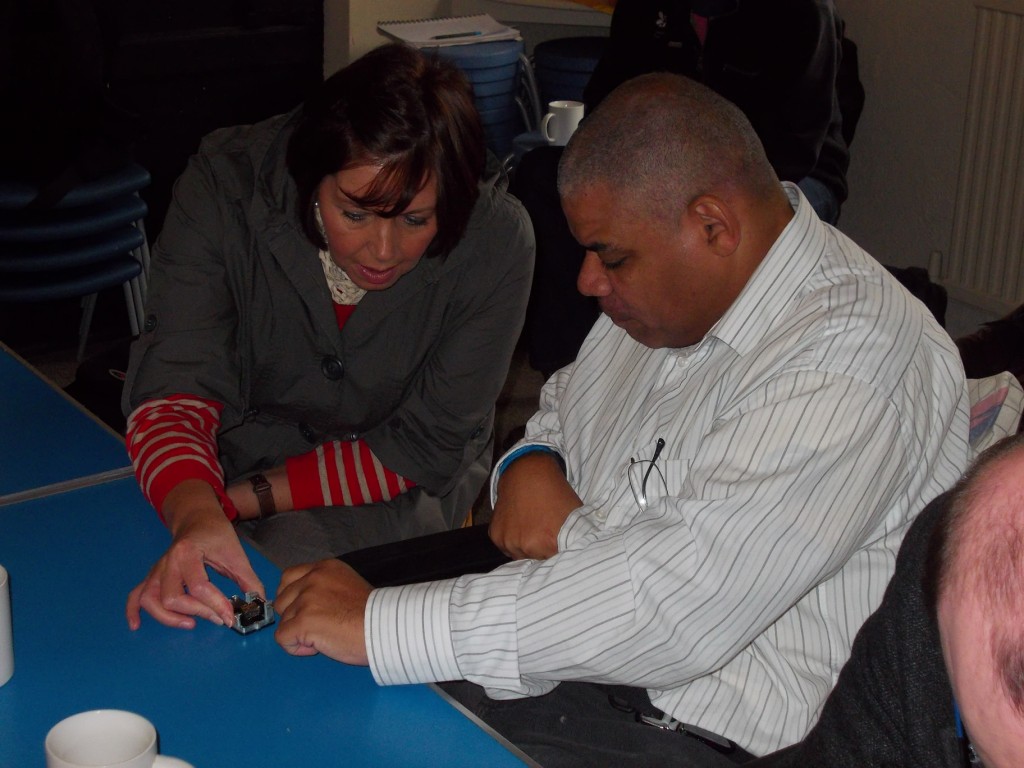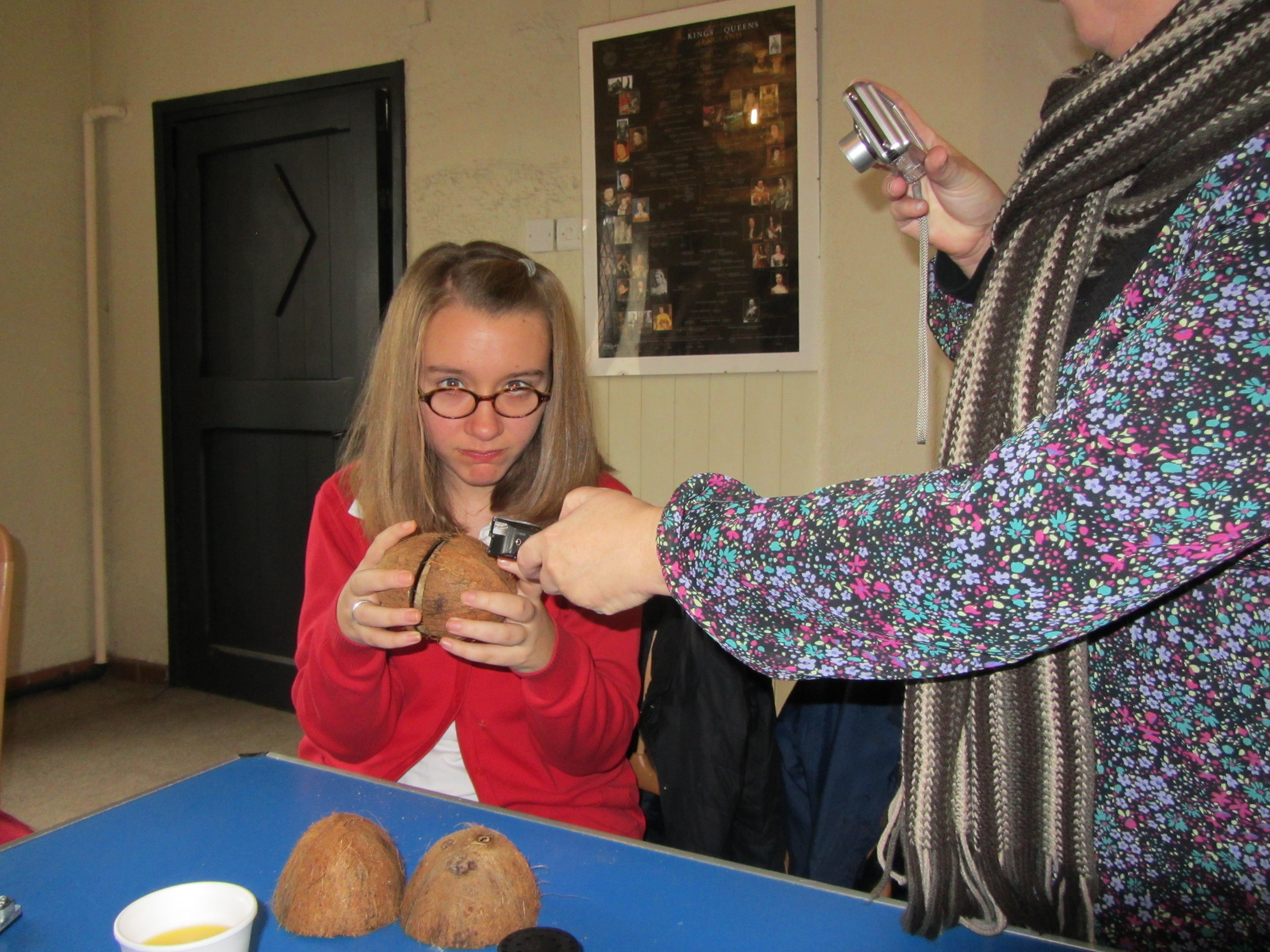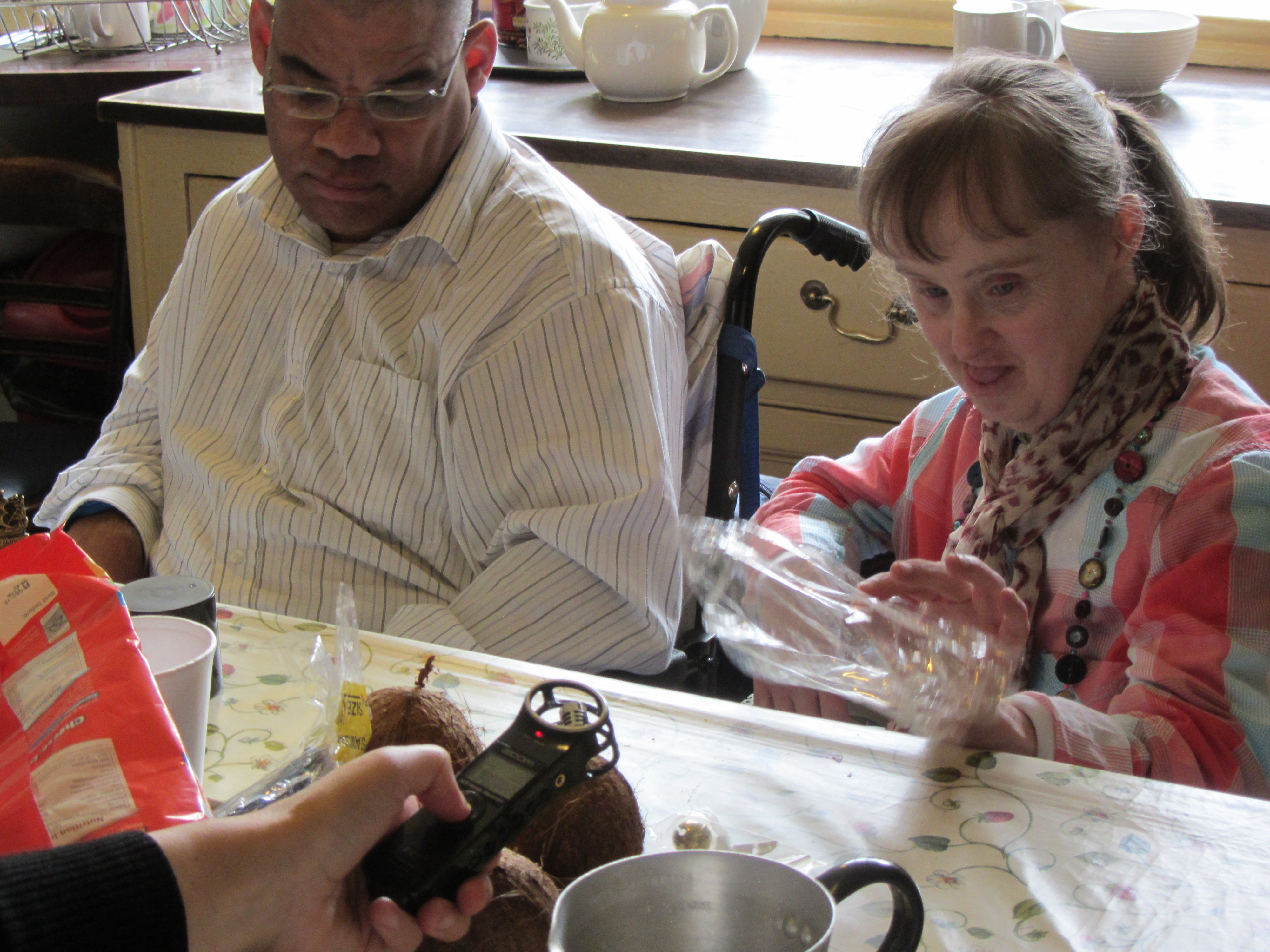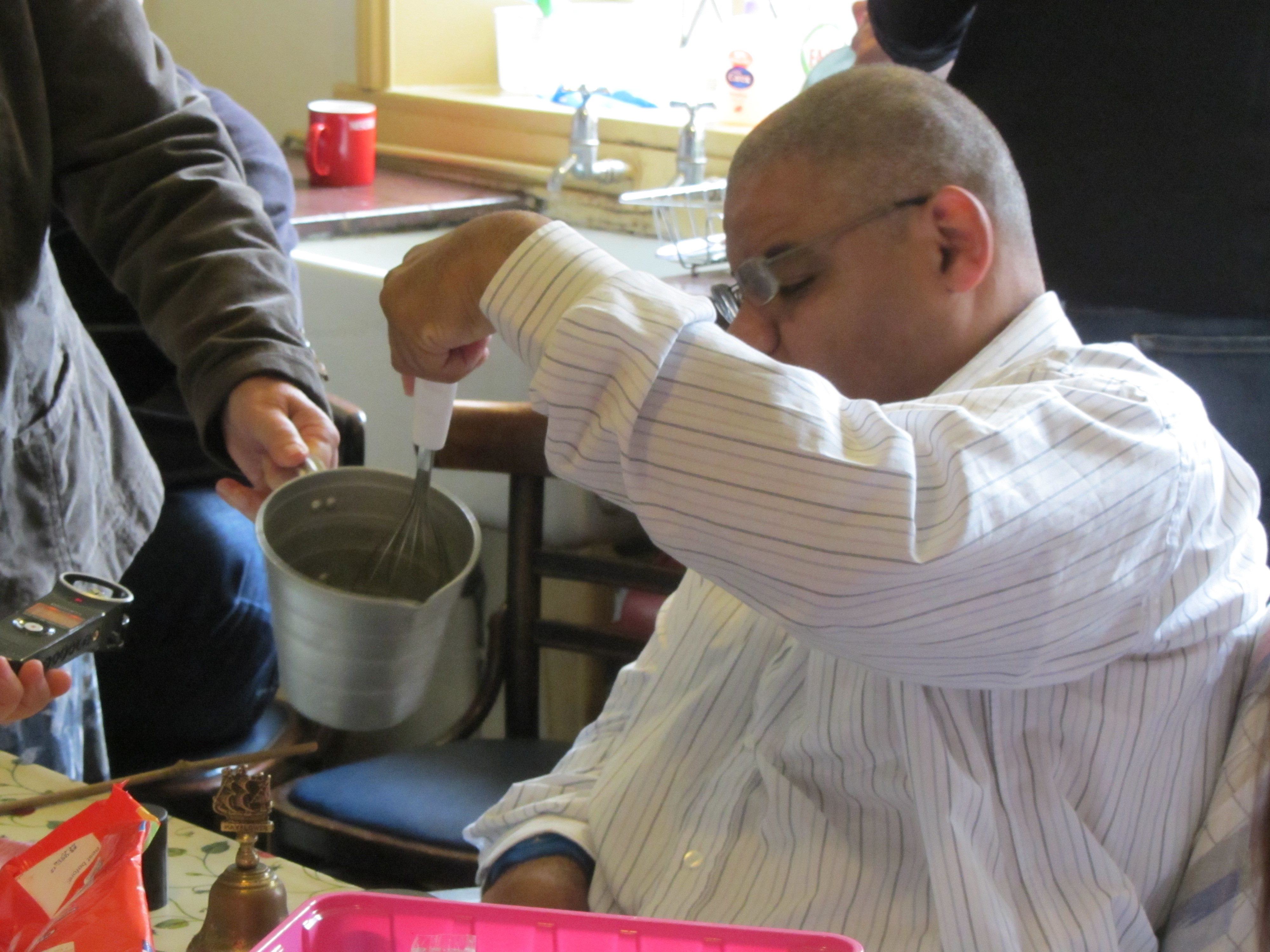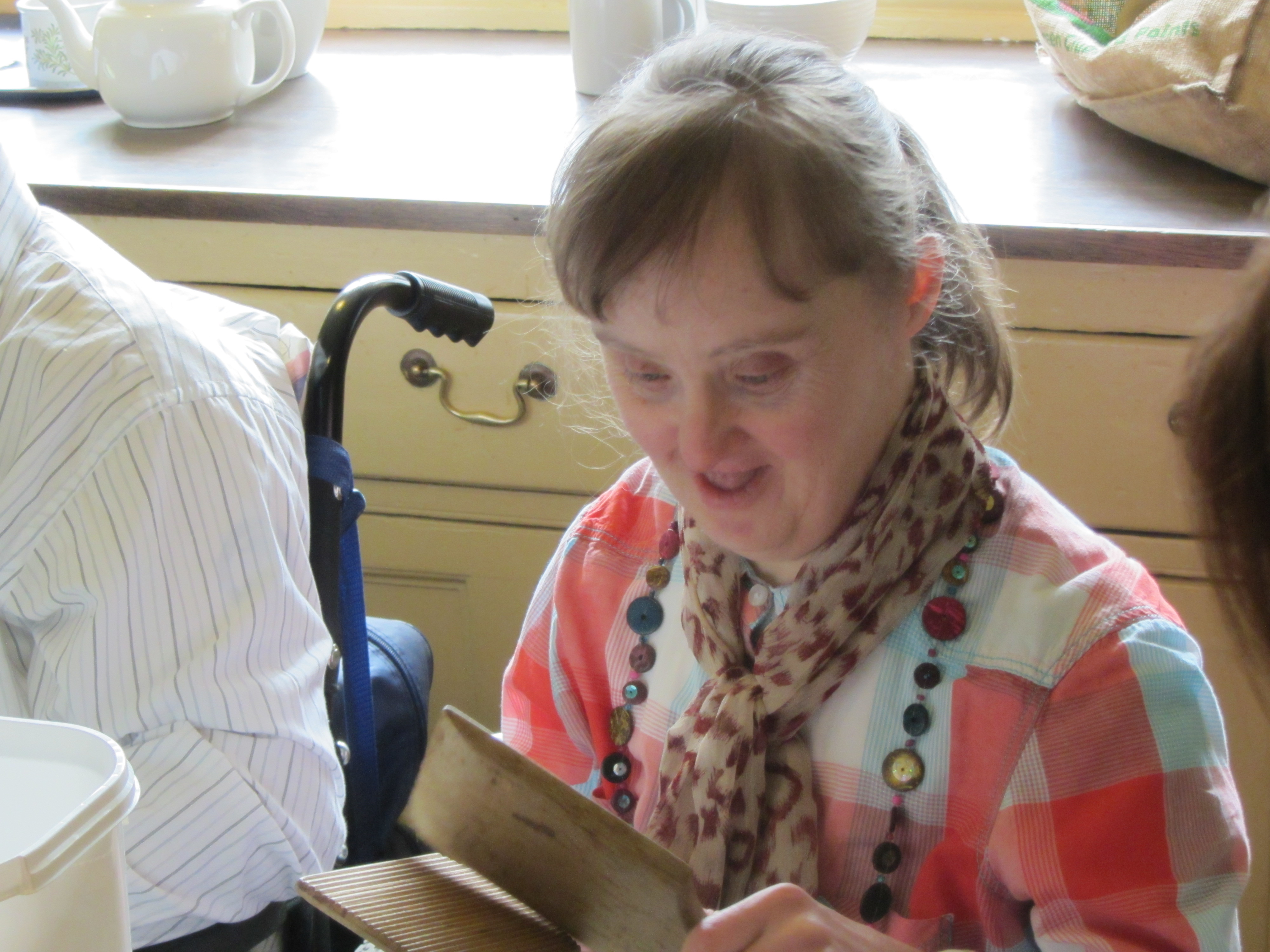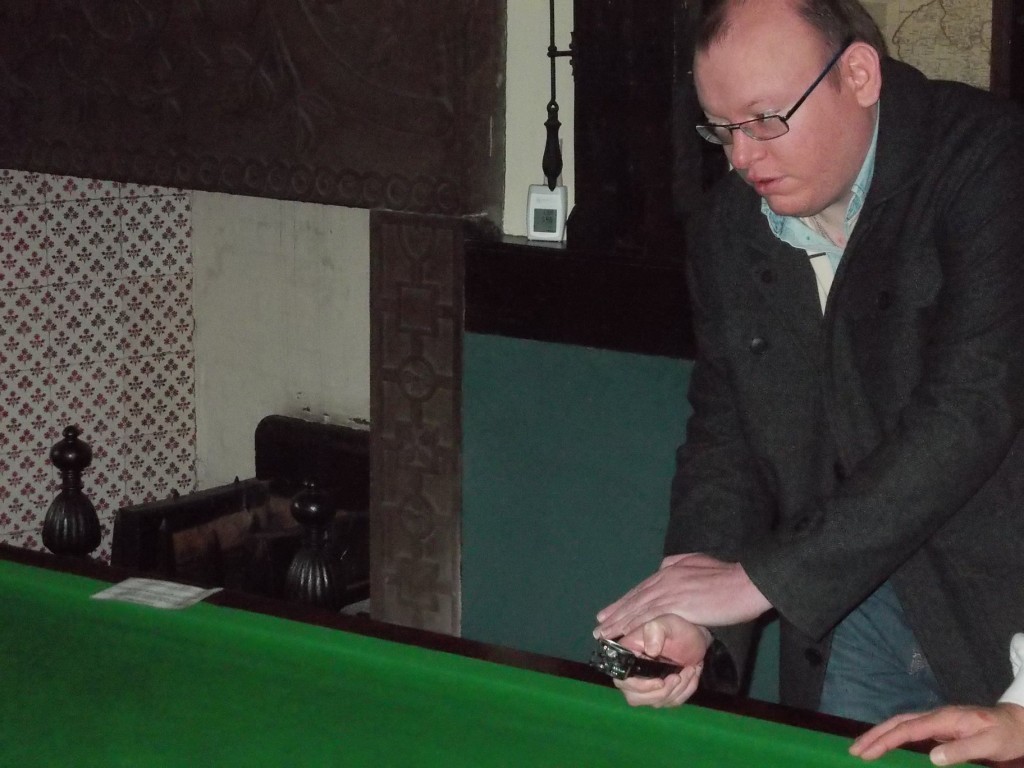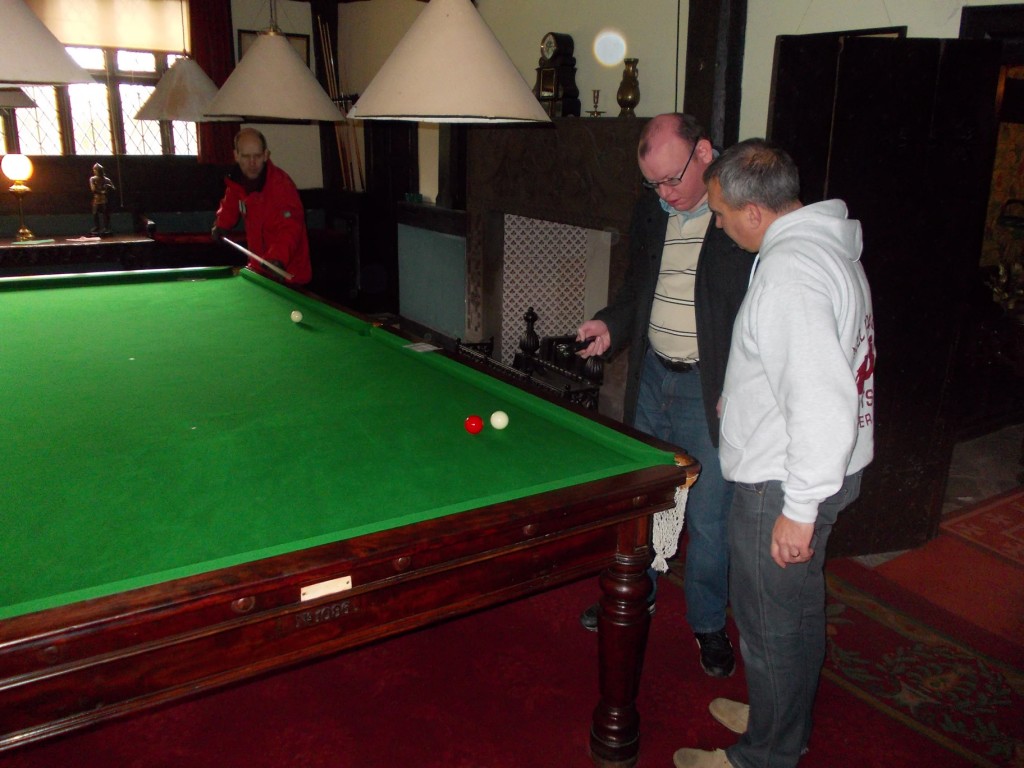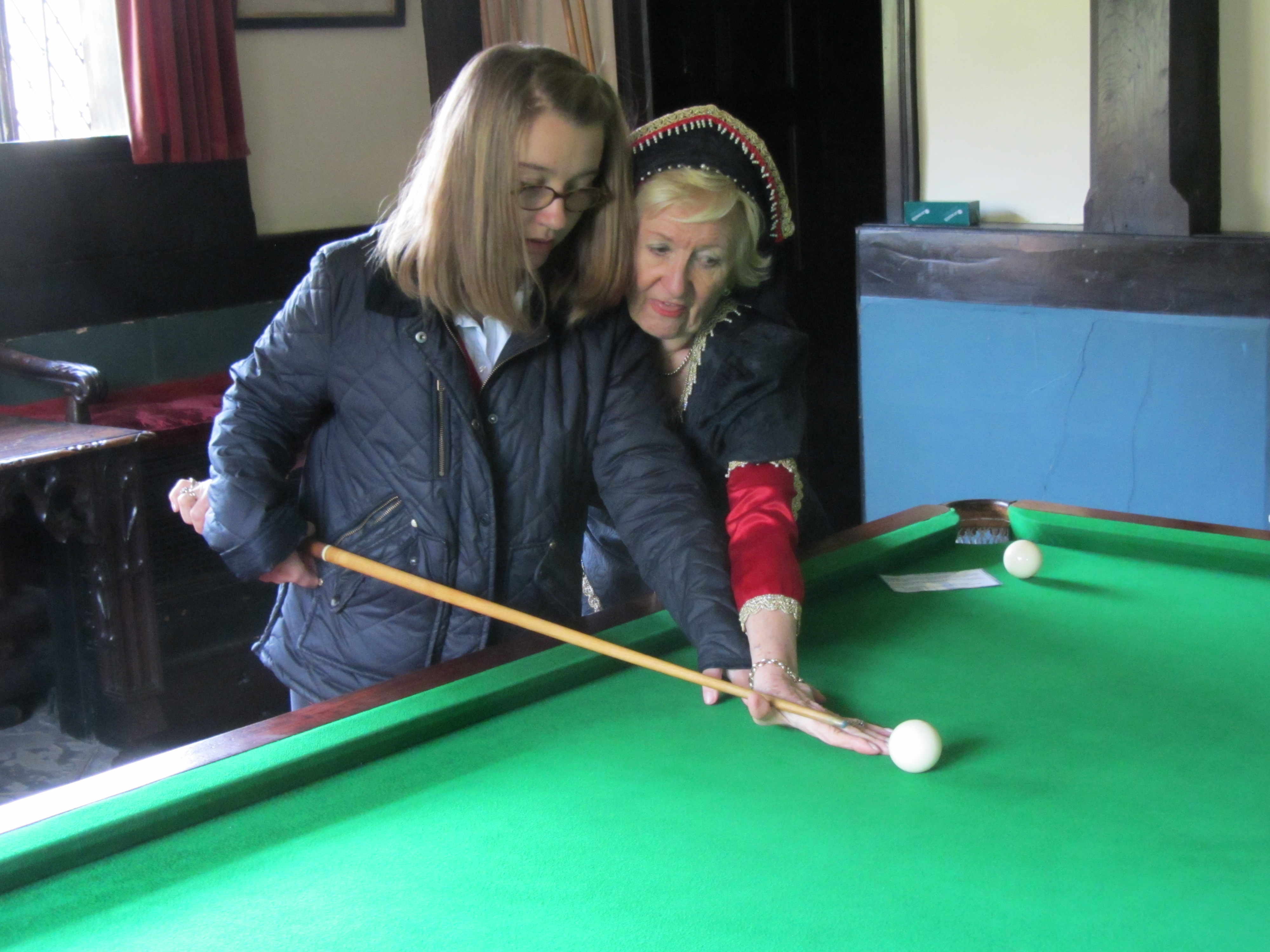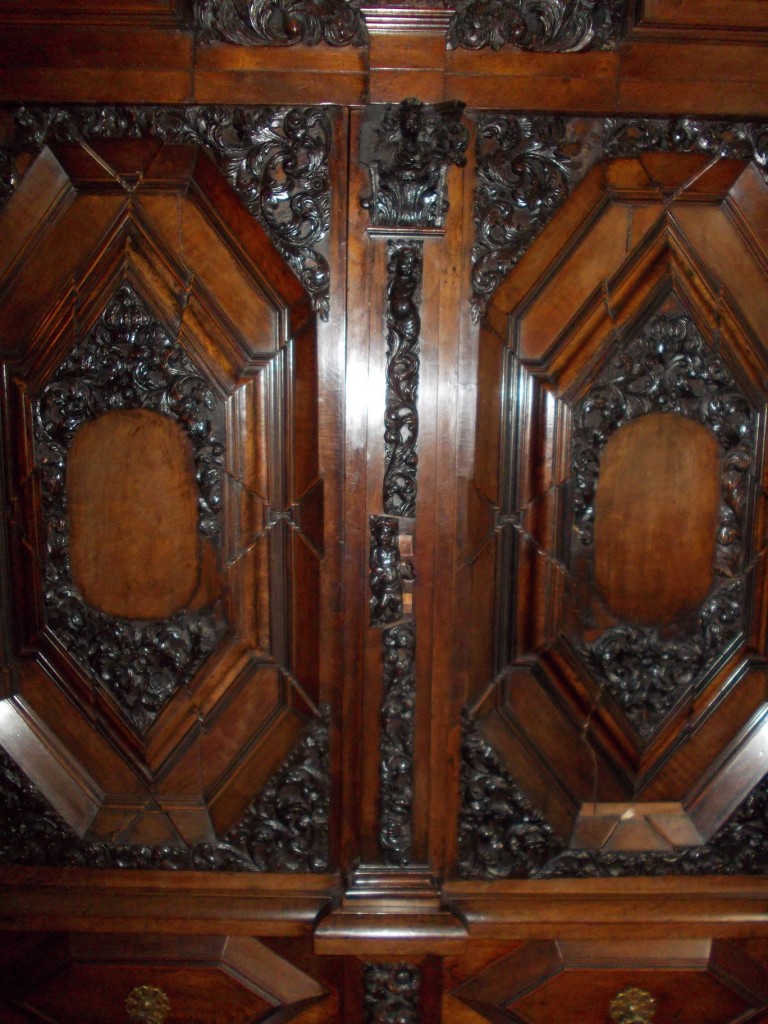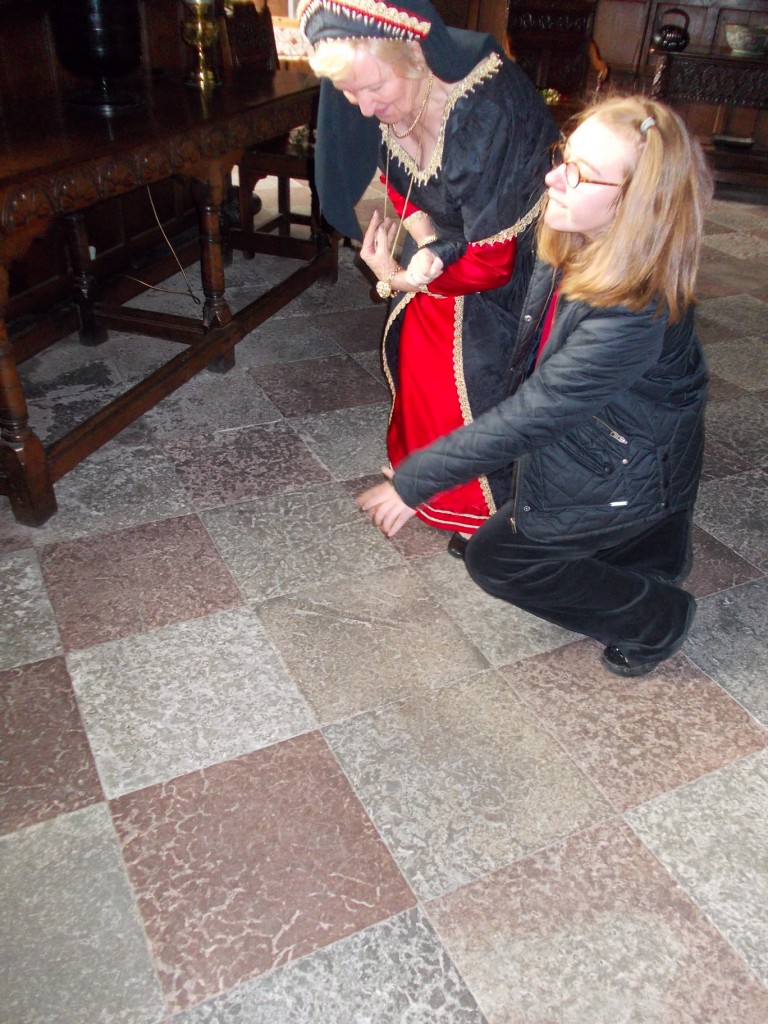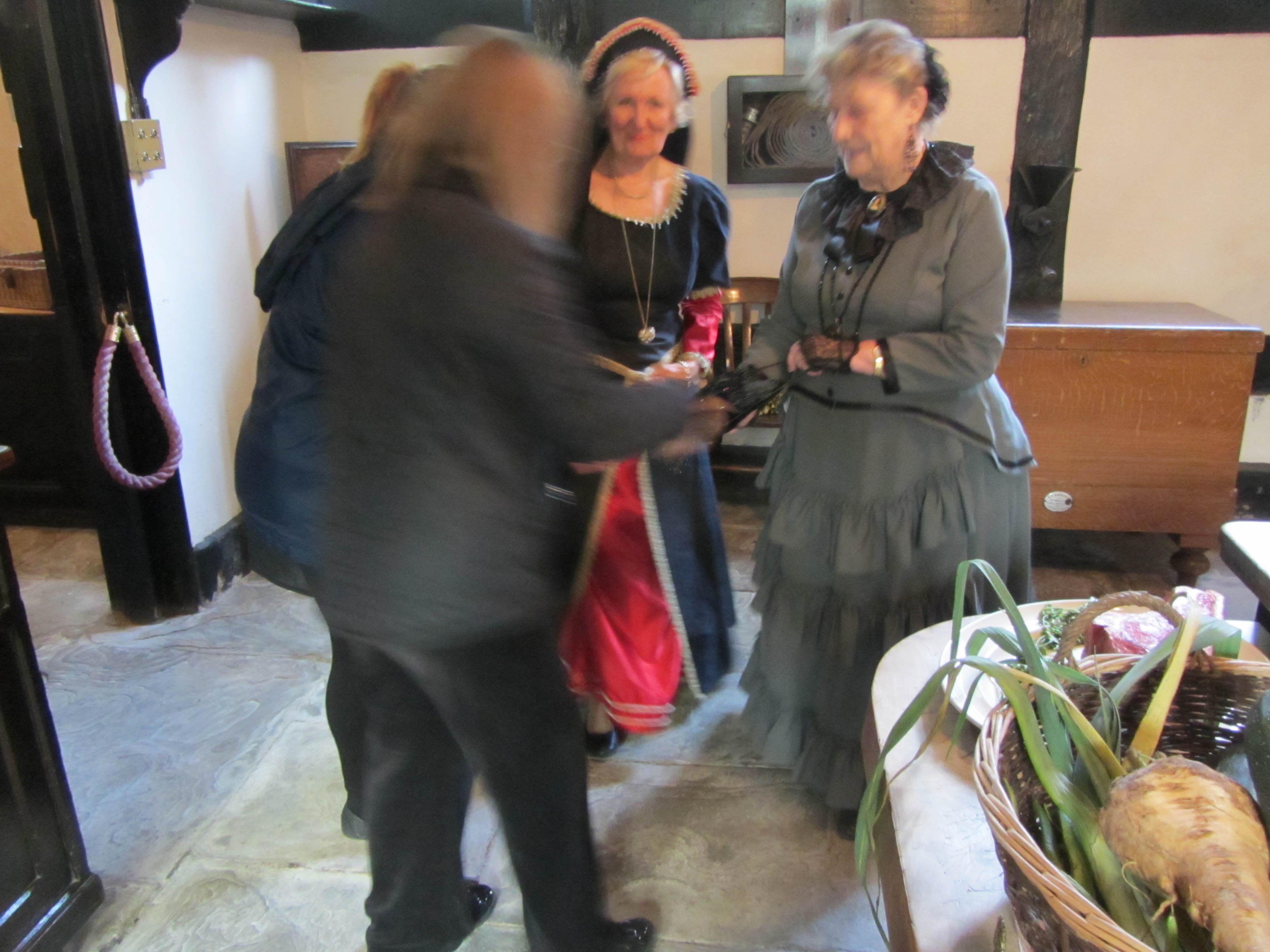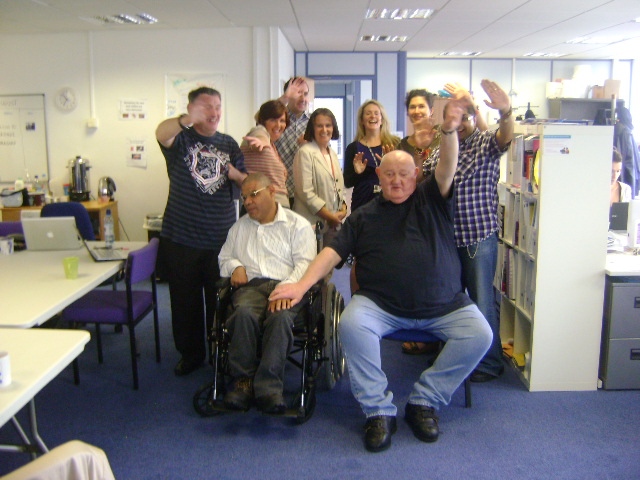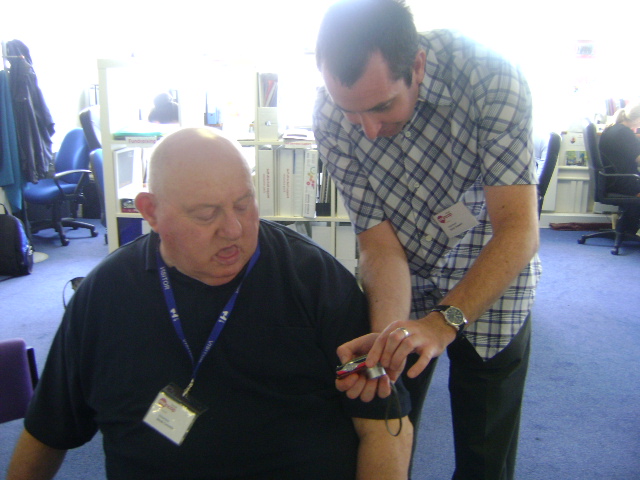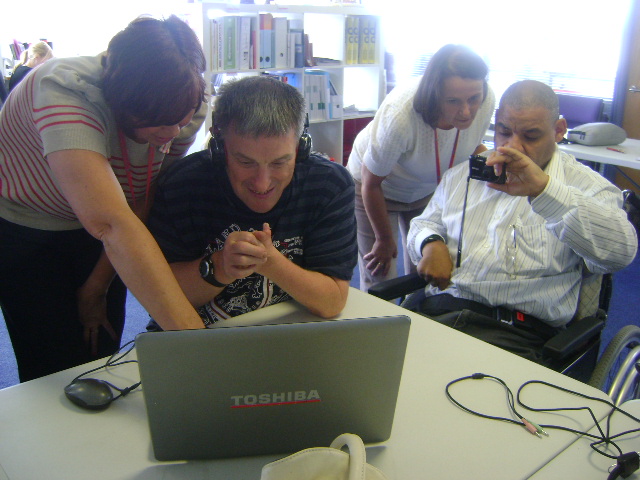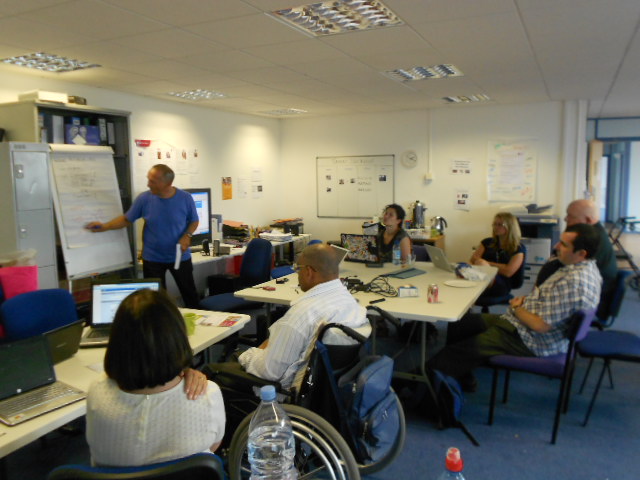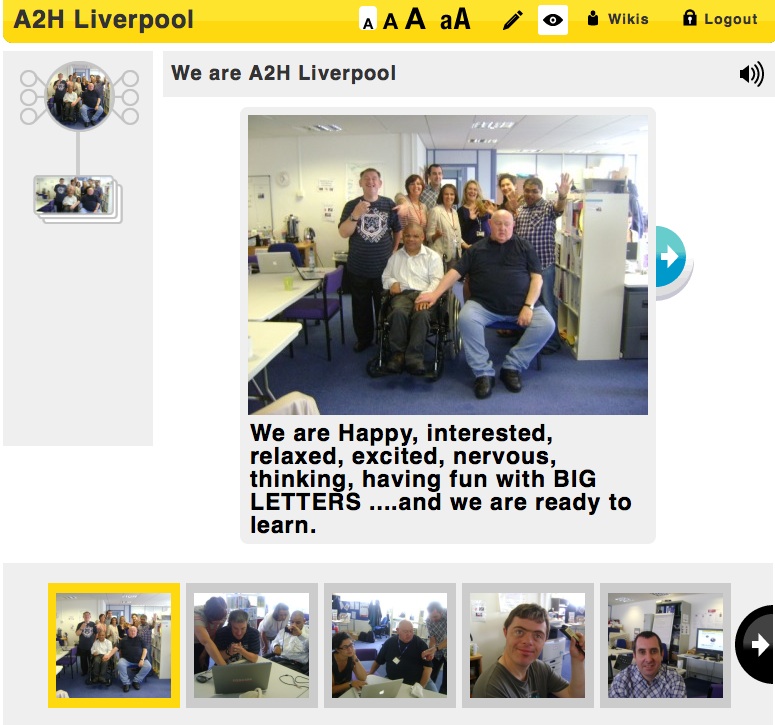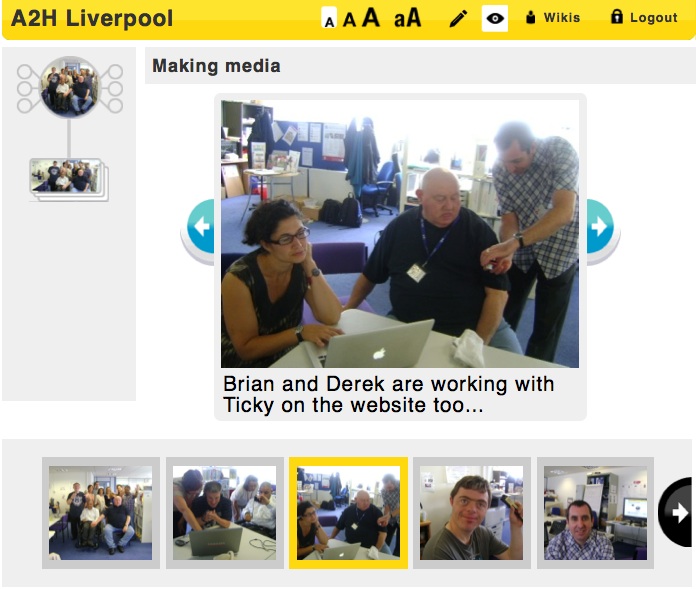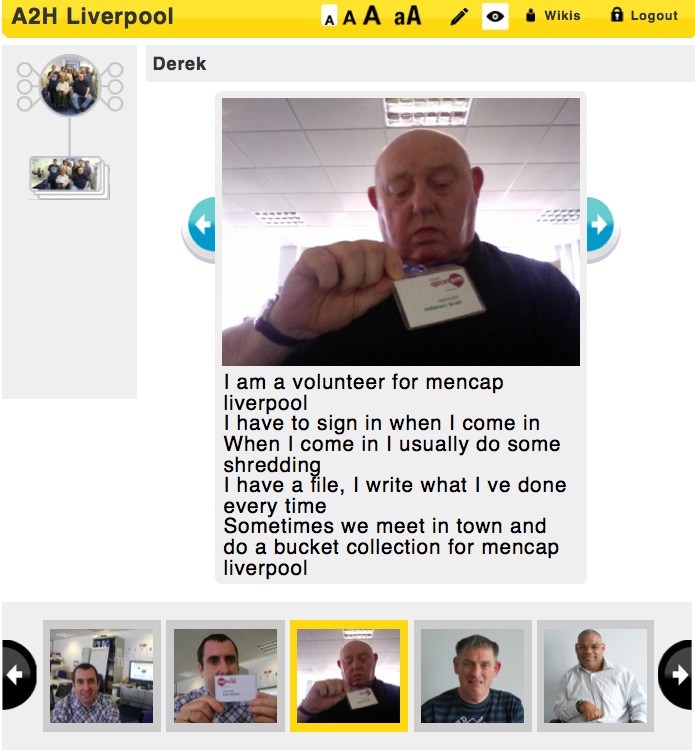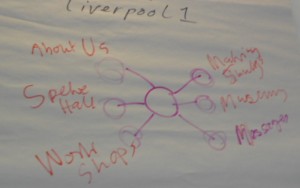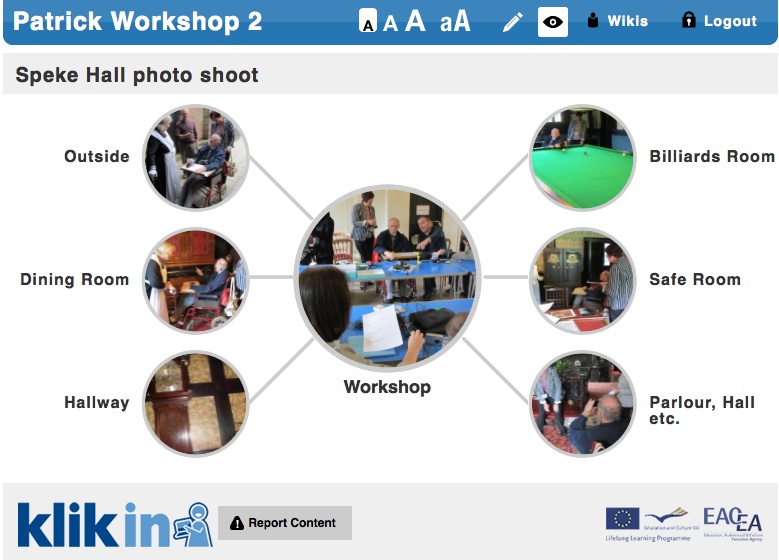Today’s workshop was primarily a reflective session, looking back on what has been accomplished in the previous workshops. At the beginning of the workshop, before the group arrived, the tables were filled with buckets, boots and baskets to show some of the work that had been created to date:
Some of the objects are not yet completed, and part of today’s session was used to help in choosing how to complete these works-in-progress. We’ll continue next Monday with these too. As you can see, the herbs that the group planted in the boots some months ago have grown significantly, and were carefully tended to by Robyn (not all are present here).
The workshop session was divided into two activities (divised by Gosia): a review and a photography session. For the review activity, each co-researcher was initially provided with a small collection of images that related to their work (things they liked, or have worked on, and included many images of themselves in the workshop sessions), so that they could begin by looking back at some of the things they had done in past workshops:
The co-researchers started out by selecting some of the their favourite pictures and videos from the project blog and from the wiki that they had co-constucted:
We wanted them to choose pictures or videos (or just sounds) that were meaningful in some way. This was quite difficult to do, and we worked one-to-one with the co-researchers. Selecting images and videos that are appealing is straightforward, but giving a reason why is often very difficult or not possible. However, it is perhaps more important that they were engaged in the task and looking at what they had done, regardless of the outcome.
The second part of the workshop was a photography session in which the co-researchers created photographs of themselves (taken by one of the other group members or support staff), a picture of themselves with the object that they had co-designed, some video of themselves with their object and also something in the museum which related to their object. The images and video can be uploaded to their personal wiki page (Klikin) in a later workshop.
Luke demonstrated his ‘hole-in-one’ bucket (missing the flag in this image):
Skye demonstrated her animal farm bucket. It plays farm animal sounds randomly, and when completed it will also respond to the grass being pressed, where it will play a recording of ‘old macdonald’.
Rachel’s pig-in-a-bucket responds by grunting when the ears are being squeezed – the next addition is to add the pig’s nose (which has been difficult to create!) so that it will also respond to the nose being pressed.
Sian took pictures of her mooing boot (the ‘Moot’) at different locations within MERL and then gave a demonstration of how it works:
Some of the sensory object works-in-progress were not available to demonstrate, so the other co-researchers’ took photographs of some of the other artworks they had created at the workshops, placing them in locations around MERL, and also took pictures of thing they liked at MERL. The following is a selection of some of them (there were hundreds of images, totalling over 1GB, so we can only select a few):
Towards the end of the workshop, we had a music session starting with Old Macdonald. We played a video which had the soundtrack of Old Macdonald plus Makaton signs which many of the group could understand:

